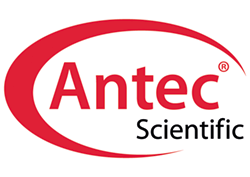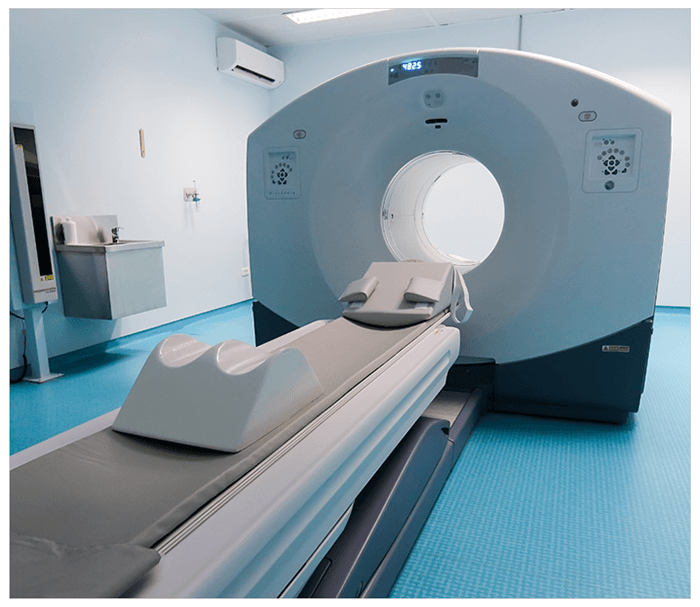Introduction
In PET imaging, the radio-labelled tracer 2-deoxy-2-(18F)fluoro-D-glucose, also called [18F]-Fluorodeoxyglucose, [18F]FDG or FDG is often used for the assessment of glucose metabolism in the heart, lungs, and the brain as well as for imaging tumors in oncology. The 109.8 minute half-life of [18F]FDG makes rapid and automated chemistry a requirement; therefore [18F]FDG is produced in a cyclotron in close vicinity of the PET facility. Prior to injection of [18F]FDG into a patient, it is necessary to perform a purity check and determine the actual concentration of the unwanted by-products: 2-fluoro-2-deoxy-D-mannose (FDM) and 2-chloro-2-deoxy-D-glucose (CDG). HPLC-ECD is the industry standard for this important test due to its ability to selectively detect [18F]FDG, FDM and CDG at very low concentration levels. Compendial methods based on ECD are described in both the US Pharmacopeia (USP) and European Pharmacopoeia (EP). These EP and USP methods are similar and based on High Performance Anion-Exchange Chromatography (HPAEC) in combination with Pulsed Amperometric Detection (PAD). In this application note Antec’s ALEXYS HPAEC-PAD analyzer is used following the conditions described in the official USP and EP monographs. The ALEXYS analyzer for FDG is based on the DECADE Elite electrochemical detector in combination with a CarboPac PA20 analytical column, which allows for fast analysis of FDG and its by-products in less than 8 minutes.

Summary
The [18F]FDG analysis was evaluated on an Antec ALEXYS HPAEC-PAD analyzer using the method and conditions described in the official USP and EP monographs. The ALEXYS analyzer for [18F]FDG is based on the new DECADE Elite electrochemical detector in combination with a CarboPac PA20 analytical column, which allows faster analysis of [18F]FDG (compounds of interest elute within 8 minutes) and better detection of its by-products compared to previously reported data [4]. In this application note typical results obtained with the ALEXYS analyzer are reported demonstrating its suitability for the analysis of FDG in compliance with EP and USP methods.






